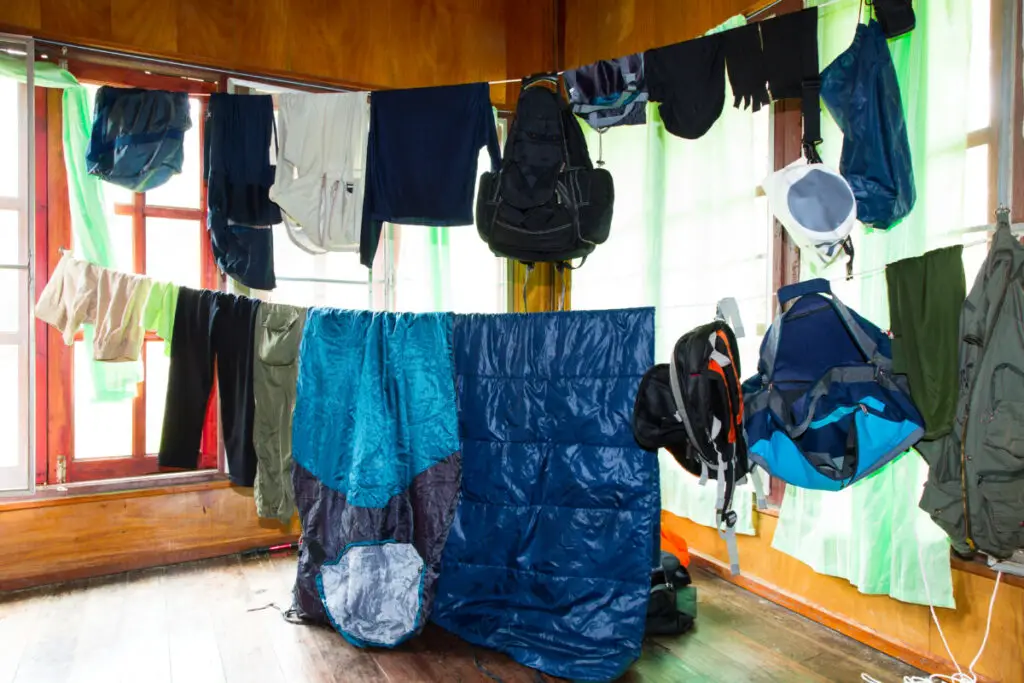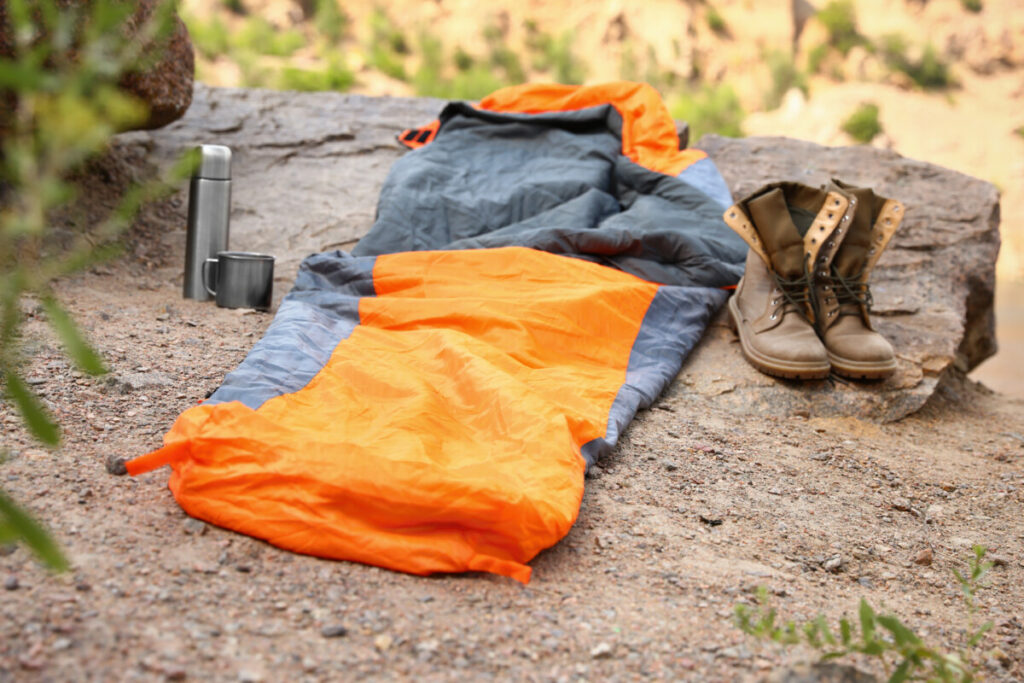
Nobody likes sleeping in a soggy or even slightly damp sleeping bag, but sleeping bags get wet all the time while you’re camping. Whether it’s an unexpected rainstorm or even heavy fog, your sleeping bag can get uncomfortably moist at the worst times. So, how long do you have to leave the sleeping bag out to dry before you’re free to move on with the rest of your plans?
Sleeping bags take about 3 to 5 hours to air dry. Unzip the bag completely and hang it on something during the hottest part of the day to speed up the process. Sleeping bags can also go in a drying machine, as long as a low heat setting is used, but the process still takes about 3 to 5 hours.
Sleeping bags aren’t always cheap, which is why it is important to know how to properly take care of them. When drying your sleeping bag, here are a few things to keep in mind.
Air Drying a Sleeping Bag
Most sleeping bags are made out of polyester and some variation of down stuffing. Polyester dries fairly quickly, but it’s the down that you need to worry about. Sleeping in a bag with wet or even slightly damp down can cause illness and generate mold, so it’s important that you give your sleeping bag plenty of time to dry out after it’s gotten wet or has been washed.
To air dry a sleeping bag, hang a rope between two trees, unzip the sleeping bag completely, and hang it over the rope to dry. This setup will allow for optimal airflow as the sleeping bag dries, but other improvisations work as well. With your bag drying this way, it can take anywhere from 3 hours to a full day to dry.
Some people report that it took upwards of 20 hours for their sleeping bag to dry out completely, but the amount of time it takes ultimately depends on the climate of the area where you are camping and the quality of the down in your bag. If you’re camping in a cold or humid area, the bag will take significantly longer to dry. Additionally, real down takes much longer to dry than synthetic down. Check the label on your sleeping bag for a breakdown of materials as well as additional care instructions.
In areas where it is hot and dry, 3 to 5 hours of drying time if far more common. Whatever the case, make sure your sleeping bag is absolutely dry before zipping it bag up and storing it or using it again. You should also plump the bag from time to time to ensure that the down isn’t drying in clumps. This will keep your sleeping bag fluffy and will help it continue to dry as quickly as possible.
Can You Dry Sleeping Bags a Faster Way?

If you don’t want to hang your sleeping bag out to dry or you have access to washing and drying machines, there is a slightly faster way to dry sleeping bags. After washing the sleeping bag, place it in a front loading dryer. The spin cycle of a front loading dryer will help the bag dry more evenly without clumping.
Add a few tennis balls to the load; as they bounce around, they will help fluff the down and keep it evenly distributed. Most importantly, make sure that the dryer is on the lowest heat setting possible. This may mean that the process takes several hours, but high heat will damage the sleeping bag material and can even cause fires. Take the time to dry the sleeping bag properly—you’ll thank yourself later.
While air drying your sleeping bag takes longer, it’s a better way to guarantee that you don’t damage the outer shell or overheat the insulation. If you have the time and the resources to hang the sleeping bag and let it air dry, that’s always a better option.
For a visual breakdown of the washing and drying process, here’s a video from REI explaining the best practices for sleeping bag maintenance.
How to Wash a Sleeping Bag
Most sleeping bags can be machine washed as long as it’s on a low-heat setting. Load the sleeping bag into a front-loading washer. Never use a top loading washer or one with an agitator; an agitator is the plastic pole in the middle of the dryer with fins designed to help spin the load. These kinds of washers will most likely damage the shell of the bag.
Add a down-friendly soap to the wash, like Nikwax® Down Wash, Grangers Down Wash, or liquid soap flakes. Use only the required amount listed on the bottle; too much soap will take forever to completely rinse out of the sleeping bag.
Set the wash to a warm or cool cycle. Once it’s complete, do an extra rinse cycle to get all of the soap out of the down. After that, you’re all set to either air dry or machine dry the sleeping bag.
If you’d prefer to wash the sleeping bag by hand, fill your bathtub with cool to lukewarm water. Add some down friendly soap and mix it into the water before laying your sleeping bag into the tub. Agitate the mixture a bit, swirling the bag around gently so that it is submerged and the soap can seep into all the nooks and crannies. Leave the bag to soak for an hour.
After an hour has passed, drain the water from the tub and refill it with fresh water. Gently move the bag around to rinse out the soap and repeat the process until no soap residue rises to the surface anymore. Once the bag is clean, drain all of the water and press down gently on the bag to squeeze out as much of the remaining moisture as possible. Do not wring it out or squeeze it; that will damage the insulation.
From there, air dry or machine dry the sleeping bag, and you’re all set! As a rule of thumb, try to wash your sleeping bag about once a year, or once per season that you typically use it.

